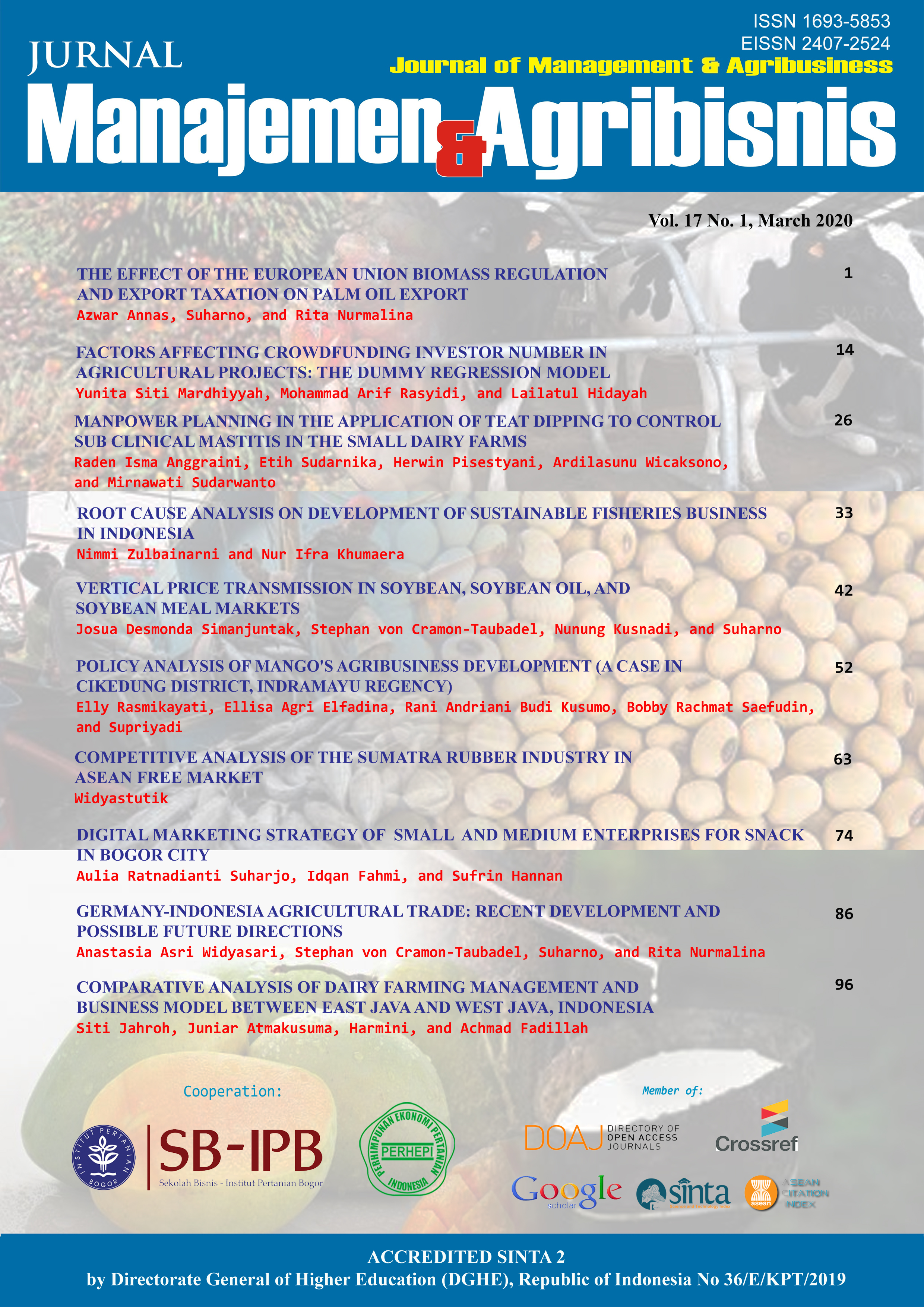Manpower Planning in The Application of Teat Dipping To Control Sub Clinical Mastitis in The Small Dairy Farms
Abstract
The application of teat dipping to control subclinical mastitis especially in small dairy farms is important; however, the application needs additional activity that has an impact on labor usage. This paper aimed to describe the labor usage to apply teat dipping for subclinical mastitis control in the small dairy farms. The convenience sampling techniques applied to select 34 farmers in Bogor as the respondents. Workload analysis and labor productivity were used in examining the application of dot dipping in various small dairy farms in Bogor City to control subclinical mastitis. This study was based on two types of experiments in small dairy farms in Bogor, West Java, namely teat dipping and without teat dipping. The findings show that the application of teat dipping had an impact on three things, namely an increase in labor usage and its workload, an increase in labor productivity and a decrease in the number of subclinical mastitis prevalence. This study concluded that labor was an important factor to control subclinical mastitis in small dairy farms. An increase in labor productivity had an impact on reducing the costs of mastitis treatment and finally increase farmer’s income.
Keywords: mastitis, labor, small dairy farms, teat dipping, workload analysis
Authors
Authors who publish with this journal agree to the following terms:
- Authors retain copyright and grant the journal right of first publication with the work simultaneously licensed under a Creative Commons Attribution License that allows others to share the work with an acknowledgement of the work's authorship and initial publication in this journal.
- Authors are able to enter into separate, additional contractual arrangements for the non-exclusive distribution of the journal's published version of the work (e.g., post it to an institutional repository or publish it in a book), with an acknowledgement of its initial publication in this journal.
- Authors are permitted and encouraged to post their work online (e.g., in institutional repositories or on their website) prior to and during the submission process, as it can lead to productive exchanges, as well as earlier and greater citation of published work (See The Effect of Open Access).

